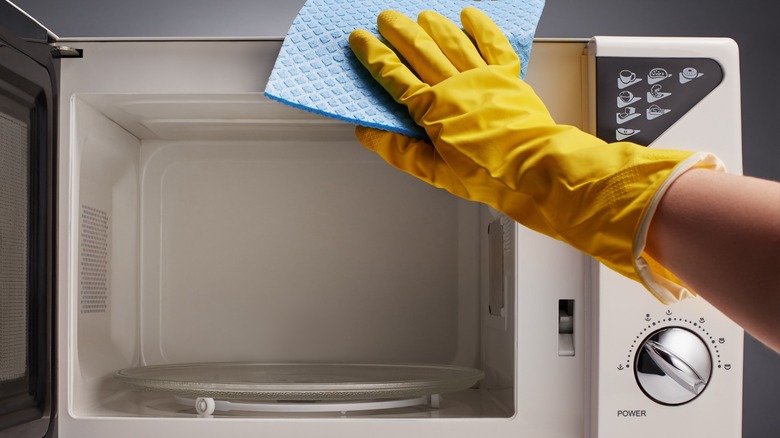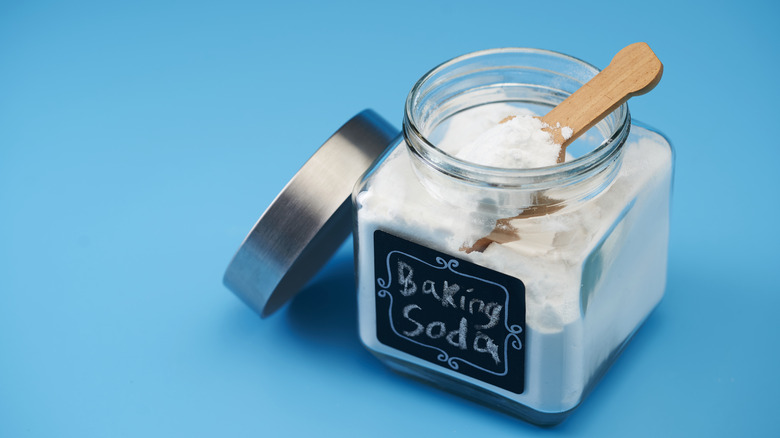Baking Soda Is Key To Cleaning Your Microwave In A Pinch
Baking soda can clean your coffee maker. Baking soda can tenderize your steak. In short, baking soda is a miracle worker, and it's a staple you should always have on hand in the kitchen. Among its many talents, baking soda is exceptional for cleaning filthy microwaves, especially those with a lot of built-up gunk. (It happens to the best of us; there is no judgment here.)
To get your appliance squeaky clean, add a couple of spoonfuls of baking soda to water in an appropriate bowl, and place it in the microwave for several minutes. As the water heats up, it will create steam in the microwave, loosening up all the grime and making it easier to get off. You can then use a damp rag to wipe away the mess and repeat the process if any spots prove to be stubborn. Alternatively, you can pair baking soda with distilled vinegar. For this method, stir baking soda in warm water until the powder is dissolved. Then, wipe the mixture over the interior before placing a bowl of equal parts vinegar and water into the microwave and heating it until it boils (about five minutes). Don't open the microwave door for 10 minutes so the combination can work its magic.
Baking soda can also be used to make a thick paste with water that you can scrub down your microwave with, but it will take more effort without first loosening up the stains and grime with steam. Of course, for a really dirty microwave, you can combine one of the steam-creating methods with the paste for a heavy-duty clean!
Why baking soda is such a cleaning powerhouse
Baking soda is great for cleaning dirty microwaves, but this raises the question: Why is it such a good cleaning agent? Well, baking soda is actually sodium bicarbonate, an alkali (soluble salt). Like all types of salt, baking soda is a neutral compound, but it has a pH value higher than neutral, making it the opposite of acidic. Because of this, it reacts with acids in several helpful ways.
For instance, as an odor eliminator, baking soda gets rid of bad smells because most are acidic. When these odors interact with sodium bicarbonate, they are neutralized. Similarly, when baking soda is combined with vinegar, an acid, a fizzy reaction occurs as the sodium bicarbonate releases carbon dioxide bubbles. You've probably seen this reaction taken to the extreme with science-fair volcanoes. However, it is also why baking soda works as a leavening agent when mixed with lemon juice, buttermilk, or another acid during baking. When cleaning, this reaction can help cut grease and lift stains, with baking soda's slightly abrasive nature working to dislodge dirt particles.
That said, you should avoid using baking soda to clean ceramic stovetops, marble, and aluminum. Because baking soda is abrasive, it can scratch delicate surfaces, and with aluminum, it can sometimes cause discoloration. So, if you're cleaning a microwave with an aluminum exterior, only use baking soda on the inside and clean the outside with a water and vinegar solution instead.

